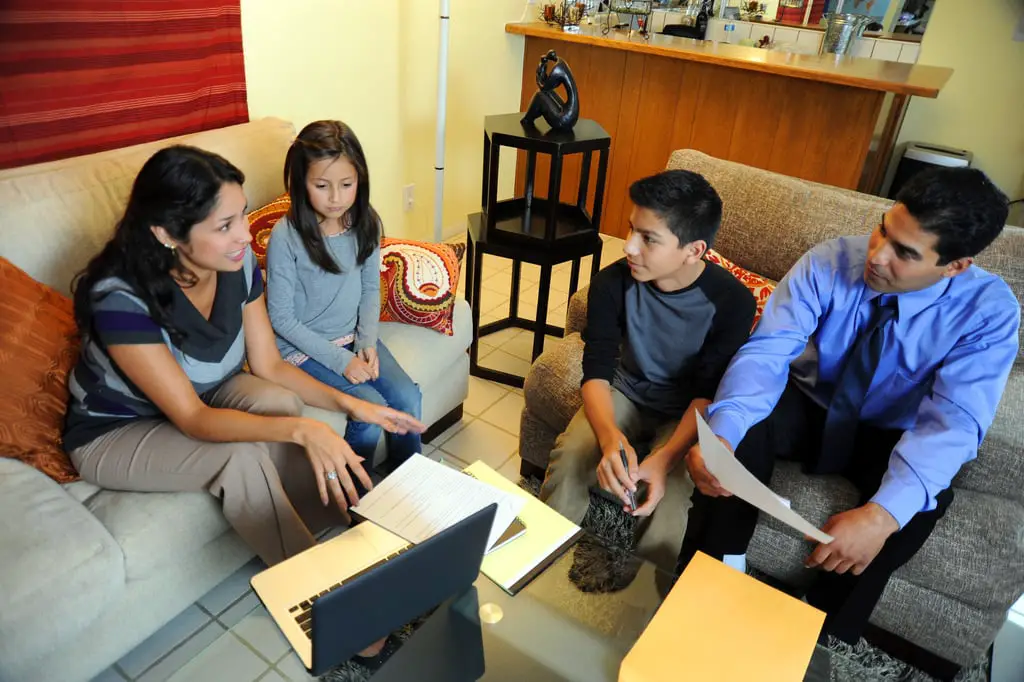Housing laws can shape communities in profound ways, yet many policies disproportionately impact immigrant families in ways that go unnoticed. From zoning regulations to federal restrictions, these laws can limit housing options, increase financial burdens, and even put families at risk of displacement. While some policies were created with seemingly neutral intentions, their effects often exacerbate housing insecurity for immigrants. Understanding these laws is the first step toward advocating for change and ensuring fair housing access for all. Here are four little-known housing laws that disproportionately affect immigrant families.
1. Public Housing Restrictions for Mixed-Status Families

Public housing programs across the U.S. provide essential affordable housing, but restrictions on mixed-status families—households where some members are documented citizens and others are not—can create serious hardships. The Department of Housing and Urban Development (HUD) enforces rules that deny federal housing assistance to undocumented immigrants, even if their family members are legal residents or U.S. citizens. This policy forces families to make difficult choices: separate to secure housing benefits for eligible members or live together without assistance, often in overcrowded or unsafe conditions. Many mixed-status families are unaware of these restrictions until they apply for assistance and are denied.
Even those who do qualify may face additional hurdles, such as increased scrutiny in housing applications and the risk of losing eligibility if their household composition changes. Some states have additional barriers, requiring proof of lawful presence for local housing aid programs, further limiting access. These policies disproportionately impact Latinx, Asian, and African immigrant communities, who are more likely to live in mixed-status households. The fear of disclosing a family member’s immigration status also discourages eligible individuals from applying for housing assistance at all. Advocacy groups are pushing for reforms that would allow all U.S. citizens in mixed-status families to receive full housing benefits, regardless of their relatives’ immigration status.
2. Landlord Discrimination Against Tenants Without Social Security Numbers

While federal fair housing laws prohibit discrimination based on national origin, many states allow landlords to require Social Security numbers (SSNs) as part of the rental application process. This practice disproportionately affects undocumented immigrants and visa holders who may not have an SSN but could still provide proof of income and rental history. Some landlords refuse to accept Individual Taxpayer Identification Numbers (ITINs), which many immigrants use to file taxes and establish financial records. This creates a significant barrier to securing stable housing, forcing many immigrant families into informal or substandard rental arrangements with little legal protection. Even when landlords do accept ITINs, immigrant renters often face higher security deposits or additional application fees.
Some cities have taken steps to address this issue by prohibiting landlords from using SSNs as a sole requirement for tenancy, but these protections are not widespread. Discriminatory application processes disproportionately affect Latinx and Asian immigrant populations, who are more likely to rely on ITINs for financial transactions. Families who cannot meet SSN-based requirements may turn to exploitative landlords who operate outside formal rental agreements, increasing their vulnerability to housing instability. Raising awareness about alternative documentation options and expanding tenant protections at the state level could help reduce these discriminatory practices.
3. Zoning Laws That Restrict Multigenerational Living

Multigenerational living is a long-standing cultural tradition in many immigrant communities, providing financial stability and mutual support. However, strict zoning laws in many U.S. cities limit the number of unrelated individuals or extended family members who can live in a single residence. Some local governments enforce maximum occupancy limits that disproportionately affect larger immigrant households, particularly in Latinx, Asian, and African communities. These laws often label multigenerational housing arrangements as “overcrowding,” even when families are living safely and responsibly.
In areas with rising housing costs, zoning restrictions force immigrant families into more expensive or less desirable housing options. Additionally, some municipalities have cracked down on accessory dwelling units (ADUs), such as basement apartments or converted garages, which are commonly used by immigrant families to accommodate relatives. While some cities have started to legalize ADUs to address housing shortages, outdated zoning laws still pose significant barriers. The enforcement of these rules often leads to eviction threats and fines, disproportionately targeting immigrant households. Advocacy efforts are underway to reform zoning policies that unfairly penalize cultural housing practices, recognizing that multigenerational living is both a financial necessity and a cultural norm for many families.
4. The “Public Charge” Rule and Its Chilling Effect on Housing Assistance

The federal “public charge” rule, which determines whether an immigrant is likely to become dependent on government assistance, has had a long-lasting impact on housing stability for immigrant families. Although the rule has been revised in recent years, fear and misinformation continue to prevent many immigrants from seeking housing assistance. Under previous versions of the rule, immigrants who received public benefits—such as Section 8 housing vouchers or public housing assistance—risked having their visa applications or green card eligibility denied. Even though the Biden administration clarified that most housing benefits do not count toward public charge determinations, many immigrants remain hesitant to apply for assistance.
This “chilling effect” disproportionately impacts low-income immigrant families, who may forgo housing aid out of fear of jeopardizing their legal status. The confusion surrounding the rule has led to decreased participation in affordable housing programs, worsening overcrowding and financial instability in immigrant communities. Advocacy organizations continue to educate families about their rights and work to ensure that fear-driven housing insecurity does not persist. Efforts to provide clear legal guidance and outreach to immigrant families are essential to undoing the damage caused by misinformation about public charge policies.
